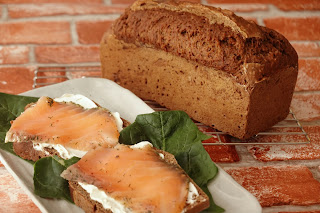Recipe
350 grams bread flour
70 grams brown sugar
4 grams salt
25 grams panettone seed powder
4 grams instant yeast
175 grams milk
1 egg yolk
1 egg
100 grams butter
80 grams raisins
20 grams lemon peel
40 grams orange peel
2 teaspoons brandy
1. Rinse the raisins in lukewarm water, drain thoroughly, and combine with the orange peel, lemon peel, and brandy. Let rest for 30 minutes or overnight if you have time. Bring the butter to room temperature.
2.
In a small bowl, mix the milk, egg yolk & egg.
3.
In a large bowl, add the strong flour, brown sugar, salt, panettone powder and yeast and mix well with a whisk. Add the milk/egg mixture and mix with a board scraper.
4.
Once it comes together, put on a clean surface and knead until the dough is smooth, about 5 – 10 minutes. Cover with the
bowl and let rest for about 10 minutes. Next, knead in the butter
in portions and knead thoroughly for about 10 – 15 minutes.
5.
Spread out the dough and knead in the fruit in several batches.
6.
Once the dough is mixed evenly,
roll it into a nice ball and place it in a bowl, cover with plastic wrap and
leave to rise in a warm place at around 30°C for about 60 to 90
minutes.
7.
When the dough has doubled in
size, the first rise is complete.
8.
Put the dough out onto a floured surface and lightly knead to
release the air.
9.
Shape the dough. Gather
the dough in the center and form it into a ball.
10. Flip it over and pull the dough with your hands to make it into a
taut ball.
11. Place in a panettone cup with the seam facing down. Leave to rise in a warm place (about 30℃) for about 60 to 90 minutes.
12. Before baking, cut a
small cross on the top and place several pieces of butter
into the slices.
Lightly brush the top with egg wash.
13. Place in an oven preheated to 190℃ for 10 minutes. Then reset to 180℃ and bake for 40 to 45 minutes.




